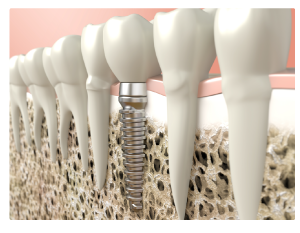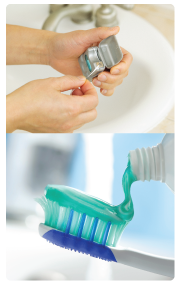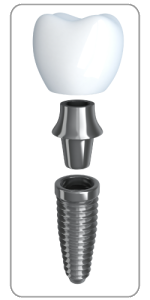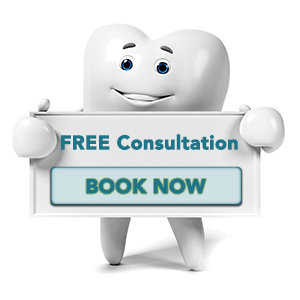Dental Implants
Dental implants are designed to provide a foundation for replacement teeth that look, feel, and function like natural teeth.
The person who has lost teeth regains the ability to eat virtually anything and can smile with confidence, knowing that teeth appear natural and that facial contours will be preserved. The implants themselves are tiny titanium posts that are placed into the jawbone where teeth are missing. The bone bonds with the titanium, creating a strong foundation for artificial teeth. In addition, implants can help preserve facial structure, preventing the bone deterioration that occurs when teeth are missing.
 Dental implants are changing the way people live. With them, people are rediscovering the comfort and confidence to eat, speak, laugh and enjoy life. For more information about dental implants or to schedule a consultation appointment.
Dental implants are changing the way people live. With them, people are rediscovering the comfort and confidence to eat, speak, laugh and enjoy life. For more information about dental implants or to schedule a consultation appointment.
If, like many others, you feel implant dentistry is the choice for you, we ask that you undergo a dental/radiographic examination and health history. During these consultation visits, your specific needs and considerations will be addressed by our doctors or by an Oral and Maxillofacial Surgeon suggested by our practice. Your questions and concerns are important to us and our team will work with you very closely to help make your procedure a success.
Dental implants are metal anchors, which act as tooth root substitutes. They are surgically placed into the jawbone. Small posts are then attached to the implant, which support through the gums. These posts provide stable anchors for artificial replacement teeth.
For most patients, the placement of dental implants involves two surgical procedures. First, implants are placed within your jawbone. For the first three to six months following surgery, the implants are beneath the surface of the gums gradually bonding with the jawbone. You should be able to wear temporary dentures and eat a soft diet during this time. At the same time, your restorative dentist designs the final bridgework or denture, which will ultimately improve both function and aesthetics.
After the implant has bonded to the jawbone, the second phase begins. Your oral surgeon will uncover the implants and attach a small healing collar. Then the doctor will be able to begin making your new teeth. An impression must be taken. Then posts or attachments can be connected to the implants. The teeth replacements are then made over the posts or attachments. The entire procedure usually takes six to eight months. Most patients do not experience any disruption in their daily life.







